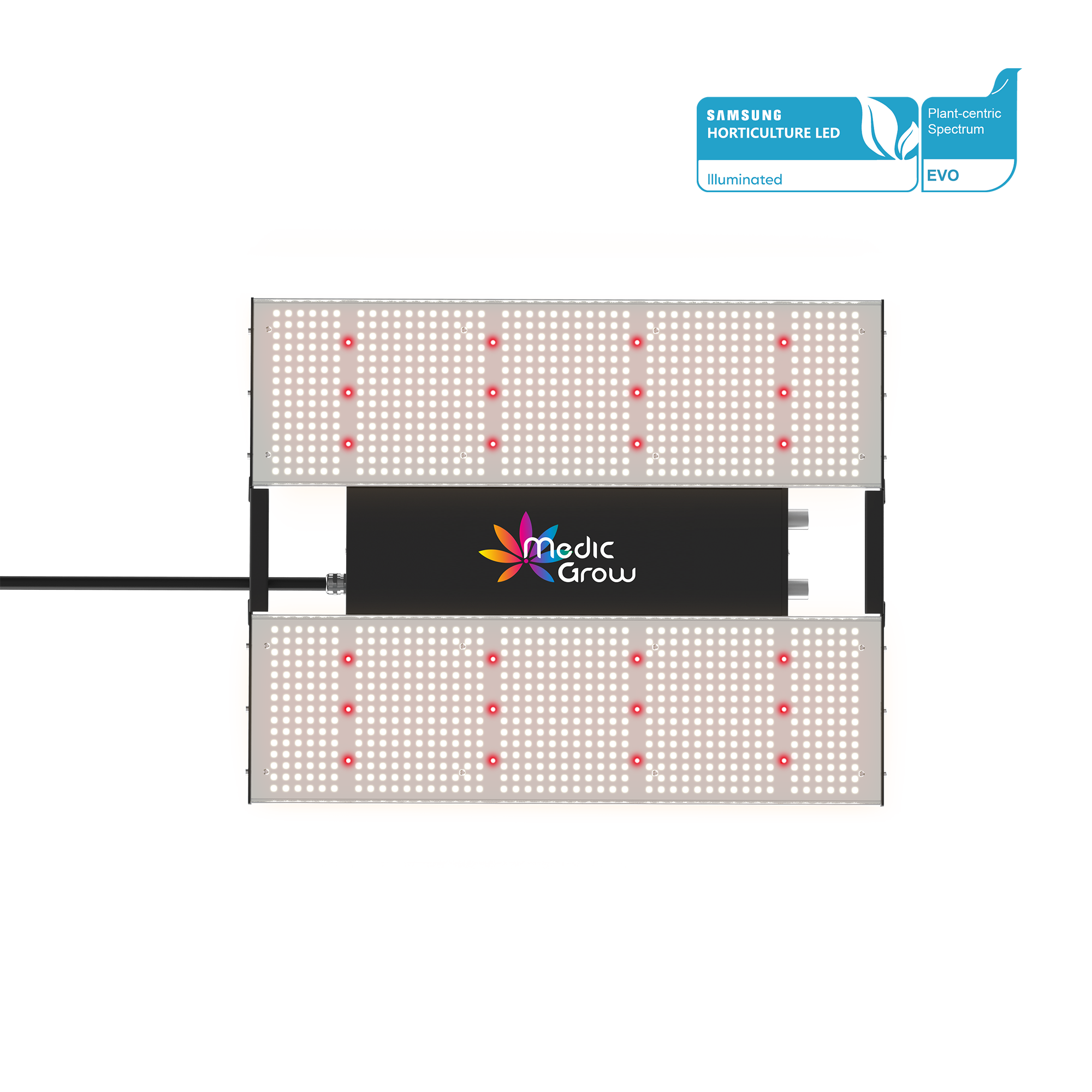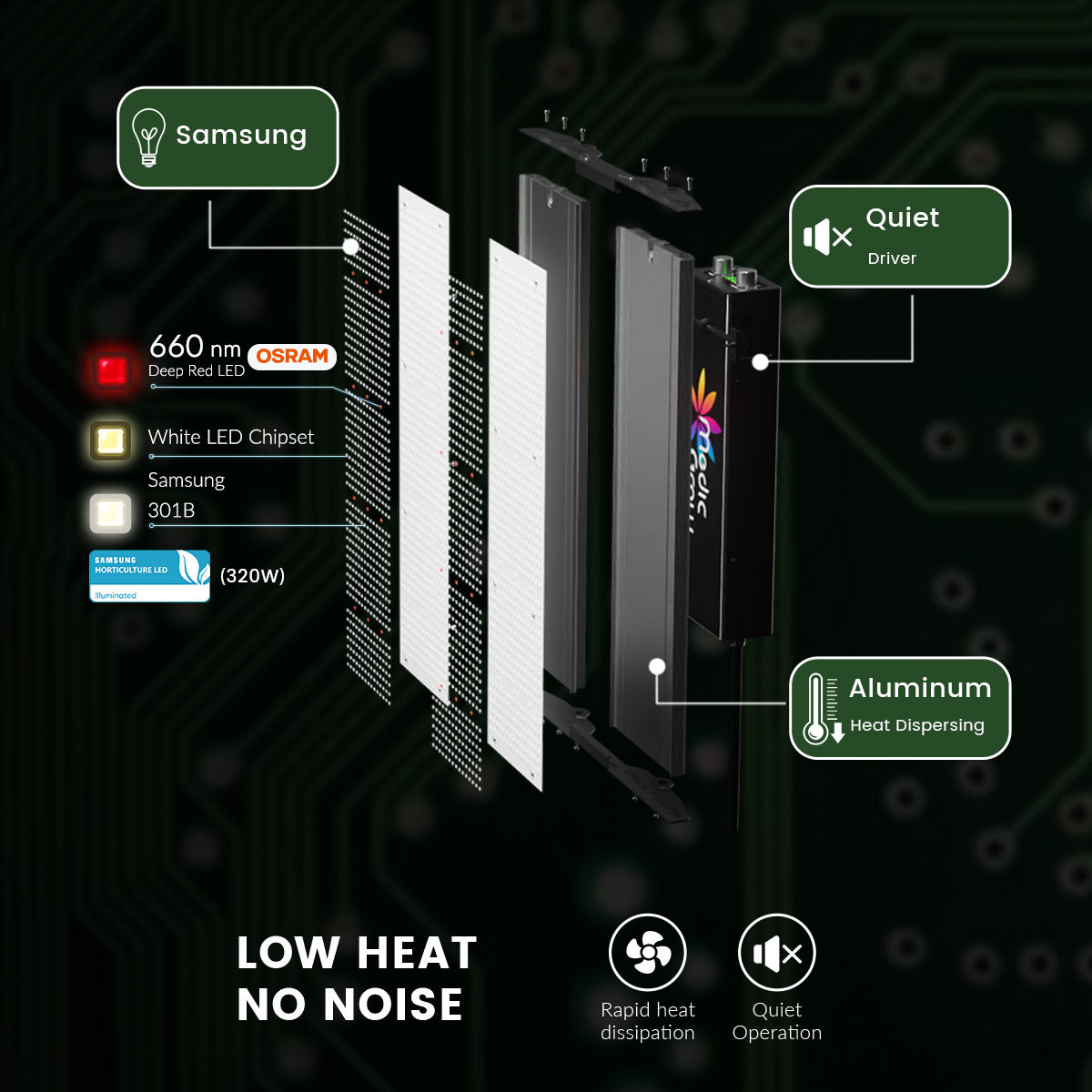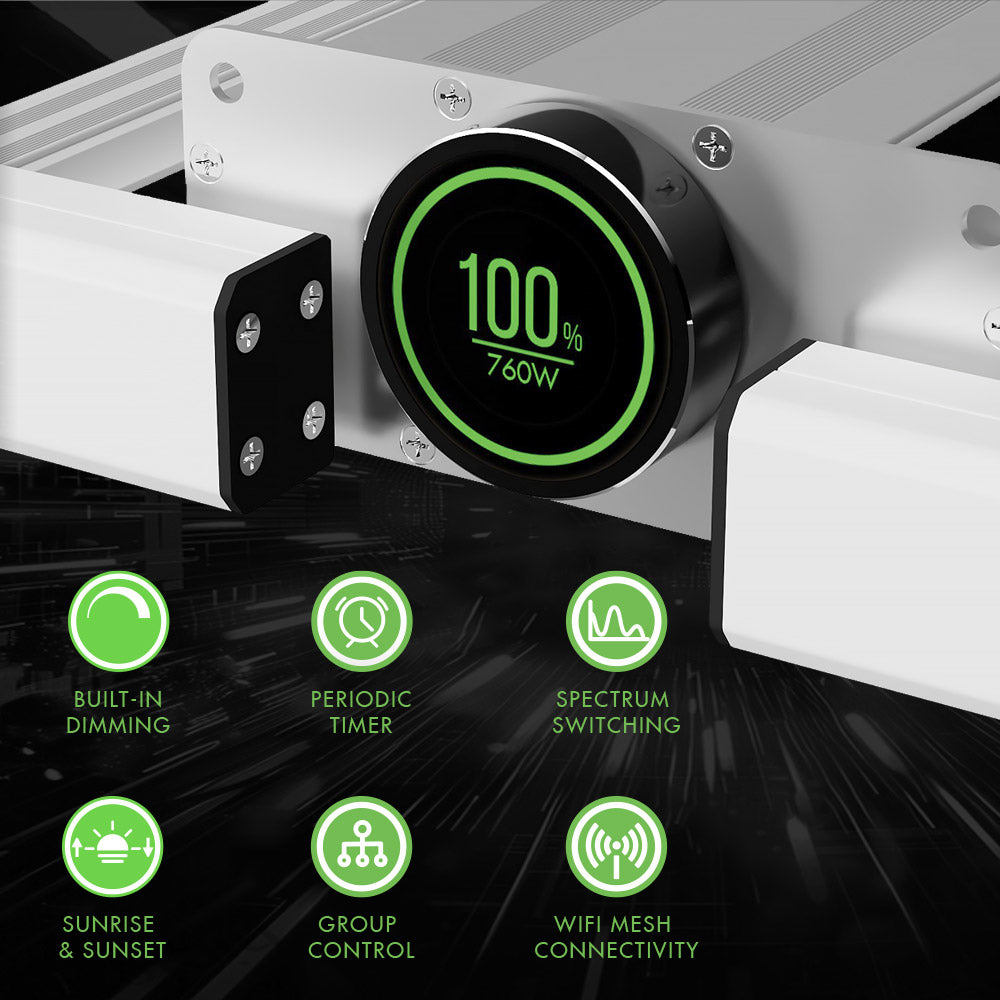
Low-Stress Training (LST) Step-By-Step Guide
Low Stress Training (LST) is a technique used to shape the growth of plants, especially green herbs, to improve light exposure and increase yields. By gently bending and tying down branches, creating a more even canopy, allows for better light distribution and maximizes grow lights' effect.
Thriving green herb growth requires careful attention from selecting seeds to providing timely green herb nutrients. Advanced growers often use training techniques to boost yields, with LST (Low-Stress Training) being a popular choice due to its simplicity and minimal harm to the plants. In this article, we offer a step-by-step guide to LST, including tips on when to start low-stress training. We hope this helps you achieve higher yields and a successful green herb harvest.
Main Content:
- 1. What is Low-Stress Training?
- 2. Pros and Cons of Low-Stress Training
- 3. When to Start LST?
- 4. How to Train Green Herb Plants (Step by Step)
- 5. Conclusion
- 6. FAQs about LST Green Herb
What is Low-Stress Training?
Low-stress training (LST) is a cultivation method where branches are gently bent and tied down to encourage horizontal growth and create an even canopy. This technique allows more light to reach lower parts of the plant, promoting uniform growth and potentially higher yields.
Unlike high-stress methods like topping green herbs, LST minimizes stress on the plant, making it a gentler way to increase flower sites and improve light penetration.
LST is particularly useful in small grow tents, as it helps keep the plant more compact. It requires regular maintenance to adjust the ties as the plant grows, ensuring that branches don't become crowded or damaged. By carefully managing the plant's growth, LST can lead to more efficient use of space and better overall results.
Pros and Cons of Low-Stress Training
Before we start, let's briefly compare the pros and cons of Low-Stress Training to help you decide whether to use LST for your plants.
Pros of Low-Stress Training
Low-stress training (LST) is a highly effective technique that offers multiple benefits for plant growth, particularly in controlled environments like indoor gardens.
By gently bending and spreading the plant's branches, LST creates a more even canopy, which allows light to penetrate more deeply into the plant and a larger area to receive full spectrum light.
This enhanced light distribution promotes uniform growth, maximizes photosynthesis efficiency, and results in bigger and more numerous flowers, leading to higher yields.
As LST enables growers to control the height and shape, it helps maximize yields by improving airflow around the foliage. Better airflow reduces the risk of mold, mildew, and pest infestations, contributing to overall plant health.
Unlike high-stress training methods like topping, which involves cutting parts of the plant, LST is a gentler approach that minimizes stress, reducing the risk of infections or stunted growth.
Overall, LST is a gentle and effective way that enables growers to achieve bigger yields from the same grow lights and grow tent kits without any additional cost.
Cons of Low-Stress Training
If there are any drawbacks to LST, it is that LST is time-consuming and requires a certain amount of skill and patience to carefully bend and secure the branches while regularly monitoring the plant's status.
As the effects of LST take time to show, it is important to check the plants at least every few days to see if the stems have shifted, allowing for timely adjustments to achieve the best results.
Additionally, LST is gentle but risky, bending branches can lead to snapping or breaking if not handled carefully, which can stress the plant or create entry points for pests and diseases.
In conclusion, Low-Stress Training is a gentle and effective growing technique that promotes plant growth and improves yield. However, it requires patience and a lot of experience, so If you're patient and eager to learn, then follow our growing guide and start LST!
When to Start LST?
The best time to begin Low-Stress Training (LST) is in the plant's early vegetative stage when the plant has grown 3 to 5 nodes. At this stage, the branches are still flexible, so it is easier to gently bend and shape the plant to form an even canopy that maximizes light.
Starting LST early allows you to better shape the structure of the plant, promoting lateral growth and an even crown. Early training also helps to establish multiple main branches, which leads to more flowering points later on.
However, LST is not a one-time effort; it is an ongoing process. As the plant grows, you'll need to periodically check and adjust the ties to guide new growth. Continuous adjustment ensures that the plant maintains an even canopy and that light reaches as many as the flowers of the plant.
How to Train Green Herb Plants (Step by Step)
LST essentially bends and secures the green herb stem to change the direction of growth, and can also be combined with Topping for even better results. Before we get started, let's prepare some tools and grow tent kits to use for tying and cutting:
- Soft ties, garden wire or plant-specific ties
- Small stakes or anchors
- Healthy green herb plants
- Sharp scissors (if you're going to Topping)
Step 1: Start Early
Start training the plant when it has 4 to 6 nodes (sets of leaves). At this stage, the stems are flexible and less likely to break when bent. Identify the main stem or a strong branch to start training, which is usually the topmost or tallest branch.
If you want to top your green herb plants, it's also the optimal time to do it during the 4-6 node vegetative stage. Topping involves cutting off the plant's top growth point with scissors.
After topping, combining it with LST (Low-Stress Training) can help promote the development of multiple side branches, increase flower number, and make better use of the light. For more details about topping, you can refer to this post: "How to Top a Green Herb Plant?"
Step 2: Bend and Secure the Main Stem
If you choose not to top the plant, you will need to bend the main stem. Once you have identified the main stem, gently bend the main stem or tallest branch downward to promote horizontal growth. Be careful not to break the stem; the goal is to create a gentle curve.
Then use soft ties to secure the bent branch to the side of the planter or other anchor point. Make sure the ties are loose enough to allow for growth and movement. The point of this step is to keep all stems the same distance from the light source, allowing light to reach each part of the plant.
Step 3: Train Additional Branches
As the plant grows, repeat the process for the following branches, bending them outward and securing them to create an even crown. Ensure that the branches are evenly distributed to avoid crowding, thus ensuring that light reaches all parts of the plant.
The key point at this stage is to avoid bending too late when flexibility decreases and young trees are more likely to bend than older ones. Another point is to bend the pliable parts of the green herb stems, which are located below the top leaves, and secure them gently with ties. Avoid bending the stems if they feel stiff, which could break them.
Step 4: Regular Adjustments
As the plant continues to grow, repeat this for any stems that are taller than the rest of the stems until the top of the plant flattens out to keep the canopy even and ensure that each branch has enough space and light.
The plant training process requires you to patiently tend to your green herb plants so that you can slowly shape a more even canopy as they grow, and also to avoid finding irregular branches too late so that you can bend them before they become too hard.
If you accidentally break a stem, immediately secure the two broken stems together with tape and watch for a while so the plant has a chance to heal.
Step 5: Final Adjustments Before Flowering
Make the final adjustments to your plants before they enter the flowering stage. The green herb flowering stage typically begins when transitioning grow lights to a 12/12 light cycle.
Once flowering starts, the plant will focus on flower development, and further training may stress the plant. Therefore, the last chance to use LST is within the first few weeks of the flowering stage.
As flowers begin to form, some branches may become heavy. Use additional ties or stakes to support these branches and prevent them from breaking.
Avoid LST after the first month of flowering unless colas grow too close to the grow lights or other parts of the plant aren’t receiving enough light. This ensures that all flowers receive sufficient light.
Step 6: Harvest green herb
After a month of flowering, your LST (Low-Stress Training) and other works are finally complete. When your plants are ready for harvest, be careful when removing ties and supports to avoid damaging the branches or flowers.
If you’ve correctly followed our LST steps throughout the green herb growth stages, congratulations! Your plants should yield a higher harvest under the same grow lights.
Under an 800W LED grow light, these plants achieved nearly a 10% increase in yield due to the application of LST.
Conclusion
Low-stress training (LST) is a simple yet effective method to maximize your green herb yields while maintaining plant health. By following these steps and regularly adjusting your plants, you can achieve a more even canopy, better light distribution, and ultimately, a more bountiful harvest. Remember, patience and careful monitoring are key to successful LST. Happy growing!
FAQs about LST Green Herb
1. When Should I Start LST Training?
It's best to start low-stress training (LST) on your green herb plants when they have 4 to 6 nodes, typically around 3 to 4 weeks into the vegetative stage. It is beneficial to continue LST during the early flowering stages, but avoid LST after a month of flowering, which can interfere with flower growth.
2. Does LST Increase Yields?
Yes, Low-Stress Training (LST) can help increase green herb yields by creating a more even canopy allowing for better light distribution. LST also improves airflow around the plant, reducing the risk of mildew and enhancing health. This promotes the growth of more flower sites, leading to higher yields.
3. What Is the LST Technique for Growing?
Low-stress training (LST) involves gently bending and securing the main stem of plants to force them to change their growth direction. This promotes a more even canopy and improves the effectiveness of grow lights, encouraging the development of multiple flower sites and enhancing overall yield.
Featured Products
Blog Posts
Contact Us with Any Idea!
- Choosing a selection results in a full page refresh.
!
































